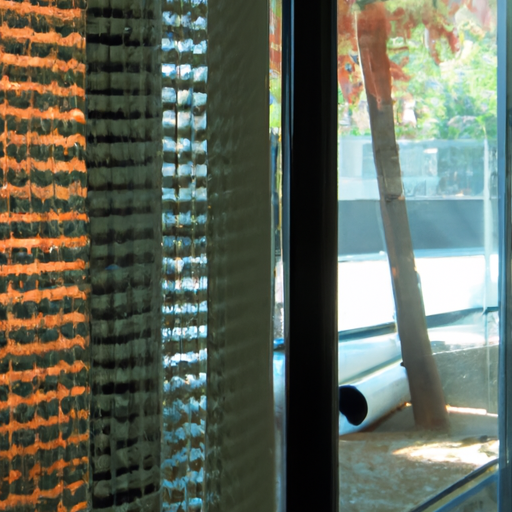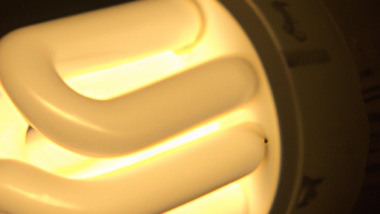Imagine a world where commercial buildings can significantly lower their energy costs simply by installing energy-efficient windows and doors. Sounds too good to be true, right? Well, it turns out that this may just be the case. With the rising awareness of environmental sustainability and the increasing need for businesses to cut costs, the installation of energy-efficient windows and doors in commercial buildings has become a hot topic. But can these upgrades really make a difference? In this article, we will explore the potential benefits and drawbacks of installing energy-efficient windows and doors, and whether they can truly help reduce energy costs for commercial buildings.
The Importance of Energy Efficiency in Commercial Buildings
Energy efficiency is crucial in commercial buildings to reduce energy costs and ensure sustainable operations. In the context of commercial buildings, energy efficiency refers to the ability of a building to use energy efficiently and effectively, minimizing waste and maximizing performance. By implementing energy-efficient measures, businesses can significantly reduce their energy consumption, lower energy bills, and improve indoor comfort. Windows and doors play a vital role in achieving energy efficiency in commercial buildings, as they are key components that can impact energy consumption.
Understanding Energy-efficient Windows and Doors
Energy-efficient windows and doors are designed to minimize heat transfer and air leakage, resulting in reduced energy consumption. These windows and doors possess specific features and characteristics that contribute to their efficiency. When it comes to windows, some key characteristics include double or triple glazing, low-emissivity (low-e) coatings, and insulated frames. These features help to reduce heat transfer through windows, preventing hot or cold air from entering or escaping the building. Similarly, energy-efficient doors are built with proper insulation materials and seals to effectively minimize air leakage, maintaining a consistent indoor temperature.
Considering the materials used in energy-efficient windows and doors, there are several options available. For windows, common materials include vinyl, fiberglass, and wood. Vinyl windows are affordable, low-maintenance, and provide excellent insulation. Fiberglass windows are highly durable and offer superior energy efficiency. Wood windows, although requiring more maintenance, provide excellent insulation properties and add a timeless aesthetic to the building. As for energy-efficient doors, materials like fiberglass, steel, and wood are frequently used. Fiberglass doors are known for their durability, energy efficiency, and resistance to harsh weather conditions. Steel doors offer strength and security while also providing energy efficiency. Wood doors, while aesthetically pleasing, require regular maintenance but can offer good insulation properties.
Benefits of Installing Energy-efficient Windows and Doors
Installing energy-efficient windows and doors in commercial buildings can bring about a myriad of benefits.
One of the primary advantages is a reduction in energy consumption. Energy-efficient windows and doors effectively prevent the transfer of heat, reducing the amount of energy required to maintain a comfortable indoor temperature. This reduction in energy consumption not only helps to minimize a building’s environmental impact but can also lead to significant cost savings for businesses.
Lower energy bills are another significant benefit. By reducing the energy consumption needed for heating, cooling, and lighting, energy-efficient windows and doors can directly contribute to lower utility bills. Over time, these savings can add up, allowing businesses to allocate more funds towards other operational expenses.
Improved indoor comfort and temperature control are also important factors. Energy-efficient windows and doors minimize air leakage and drafts, resulting in a consistent indoor temperature throughout the building. This leads to better comfort for occupants, reducing the need for additional heating or cooling equipment and enhancing their overall experience within the premises.
Factors to Consider When Installing Energy-efficient Windows and Doors
Several factors should be taken into consideration when installing energy-efficient windows and doors in commercial buildings.
Firstly, building location and climate play a crucial role. The climate and weather conditions in a particular region directly affect the performance requirements of windows and doors. For example, buildings located in colder climates will benefit from windows and doors that offer excellent insulation to retain heat, while buildings in hotter climates may require windows and doors that minimize solar heat gain.
Cost of installation and potential savings are essential considerations. While energy-efficient windows and doors may have a higher upfront cost compared to conventional options, the long-term energy savings can offset this initial investment. It is crucial to assess the potential return on investment and calculate the payback period to determine the financial viability of installing energy-efficient windows and doors.
The effectiveness of insulation and sealing is another critical factor. Proper insulation and sealing in windows and doors are key to preventing air leakage and heat transfer. High-quality insulation materials and seals must be used to ensure maximum efficiency and minimize energy loss through gaps or cracks.
Case Studies on Energy-efficient Windows and Doors in Commercial Buildings
To comprehend the practical implementation and benefits of energy-efficient windows and doors in commercial buildings, let’s explore a few case studies.
Case study 1: Energy-efficient windows and doors in an office building
In an office building located in a busy urban area, the installation of energy-efficient windows and doors resulted in a noticeable reduction in energy consumption. The double-glazed windows effectively blocked out noise pollution and reduced heat transfer, enhancing the overall comfort for employees. As a result, the building’s energy bills decreased significantly, enabling the company to allocate those saved funds to implement additional sustainability initiatives within the office.
Case study 2: Energy-efficient windows and doors in a retail store
A retail store installed energy-efficient windows and doors to create a more inviting shopping environment while also reducing energy costs. By implementing triple-glazed windows, the store effectively controlled the indoor temperature, minimizing the need for excessive heating or cooling. The energy savings resulted in lower operating costs for the business, allowing the store to invest in other areas such as marketing and customer experience.
Case study 3: Energy-efficient windows and doors in a hotel
A hotel located in a coastal area replaced its traditional windows and doors with energy-efficient alternatives. The new windows and doors were specifically designed to withstand harsh weather conditions and reduce air leakage. The improved energy efficiency not only reduced the hotel’s energy bills but also enhanced the comfort of guests by reducing drafts and noise. As a result, the hotel received positive feedback from guests and experienced an increase in bookings.
Potential Challenges and Limitations of Energy-efficient Windows and Doors
While energy-efficient windows and doors offer numerous benefits, there are also potential challenges and limitations to consider.
One of the main challenges is the initial cost and return on investment. Energy-efficient windows and doors can have a higher upfront cost compared to conventional options. However, it is important to consider the long-term savings in energy bills that can offset the initial investment. Many businesses find that the return on investment justifies the higher initial cost.
Maintenance and durability can be another consideration. Depending on the materials used, energy-efficient windows and doors may require specific maintenance to ensure their longevity and performance. Proper care, such as regular cleaning and inspections, is essential to maximize their lifespan.
Compatibility with existing architectural designs can also pose a limitation. Some commercial buildings have architectural features or historical elements that may limit the options for energy-efficient windows and doors. In such cases, finding energy-efficient solutions that blend seamlessly with the building’s aesthetics can be more challenging.
Tips for Choosing the Right Energy-efficient Windows and Doors
To ensure the selection of the right energy-efficient windows and doors, consider the following tips:
-
Consider energy-saving certifications and ratings. Look for windows and doors that have been tested and certified by reputable organizations such as ENERGY STAR. These certifications ensure that the products meet specific energy efficiency standards.
-
Evaluate the window and door manufacturer’s reputation. Research the reputation and track record of the manufacturer before making a decision. Look for manufacturers known for producing high-quality, energy-efficient products that have stood the test of time.
-
Consult with energy efficiency professionals. Seek guidance from experts or professionals who specialize in energy-efficient solutions for commercial buildings. They can provide valuable insights and recommendations based on your specific needs and requirements.
Government Incentives and Programs for Energy-efficient Retrofits
Governments at various levels often provide incentives and programs to encourage energy-efficient retrofits in commercial buildings.
There are various incentives and programs available, such as tax credits, grants, and rebates, that can help offset the initial cost of installing energy-efficient windows and doors. These incentives aim to encourage businesses to invest in energy-efficient upgrades, promoting sustainability and reducing the overall energy consumption of commercial buildings.
To qualify for these incentives and programs, certain criteria must be met. This may include using energy-efficient products, adhering to specific performance standards, or demonstrating energy savings. The application process usually involves submitting the necessary documentation and proof of compliance.
Success stories of businesses that have participated in these programs and implemented energy-efficient retrofits highlight the positive impact on overall energy efficiency. By taking advantage of government incentives and programs, businesses can not only reduce their energy costs but also contribute to a more sustainable future.
Recommendations for Commercial Building Owners and Managers
To maximize the energy efficiency of commercial buildings, owners and managers should consider the following recommendations:
-
Perform a comprehensive energy audit. Conduct an energy audit to identify areas of high energy consumption and inefficiencies within the building. This assessment will help prioritize energy-efficient upgrades, including the installation of energy-efficient windows and doors.
-
Consider long-term energy savings when making purchasing decisions. While the initial cost of energy-efficient windows and doors may be higher, it is essential to factor in the long-term energy savings. Choose products that offer the best balance between upfront cost and energy efficiency to achieve optimal results.
-
Regularly maintain and monitor the performance of windows and doors. Proper maintenance is crucial to ensure the efficiency and durability of energy-efficient windows and doors. Implement a regular inspection and maintenance schedule to identify any issues and address them promptly. This will ensure that the windows and doors continue to perform at their best, maximizing energy savings.
Conclusion
The installation of energy-efficient windows and doors in commercial buildings is a crucial step towards reducing energy costs and promoting sustainability. These windows and doors offer numerous benefits, including a reduction in energy consumption, lower energy bills, and improved indoor comfort. However, it is important to consider factors such as building location, cost, and insulation effectiveness when selecting energy-efficient windows and doors. By evaluating case studies, understanding potential challenges, and following recommendations, commercial building owners and managers can make informed choices that contribute to energy efficiency and long-term cost savings. With government incentives and programs available, businesses can further enhance their energy efficiency efforts and make a positive impact on the environment. Embracing energy efficiency in commercial buildings is not only good for the bottom line but also for the future of our planet.


